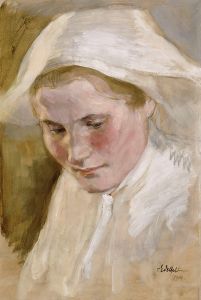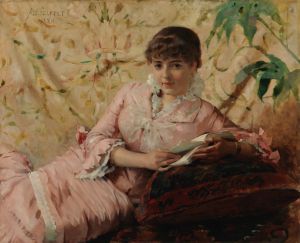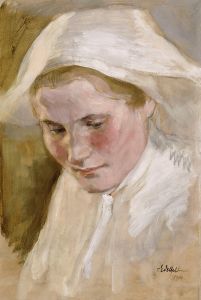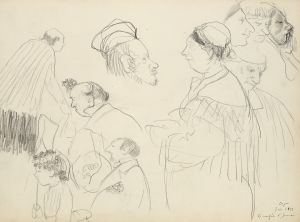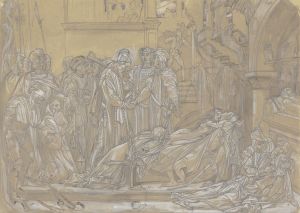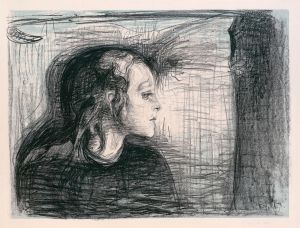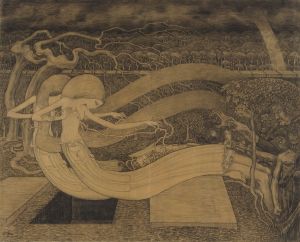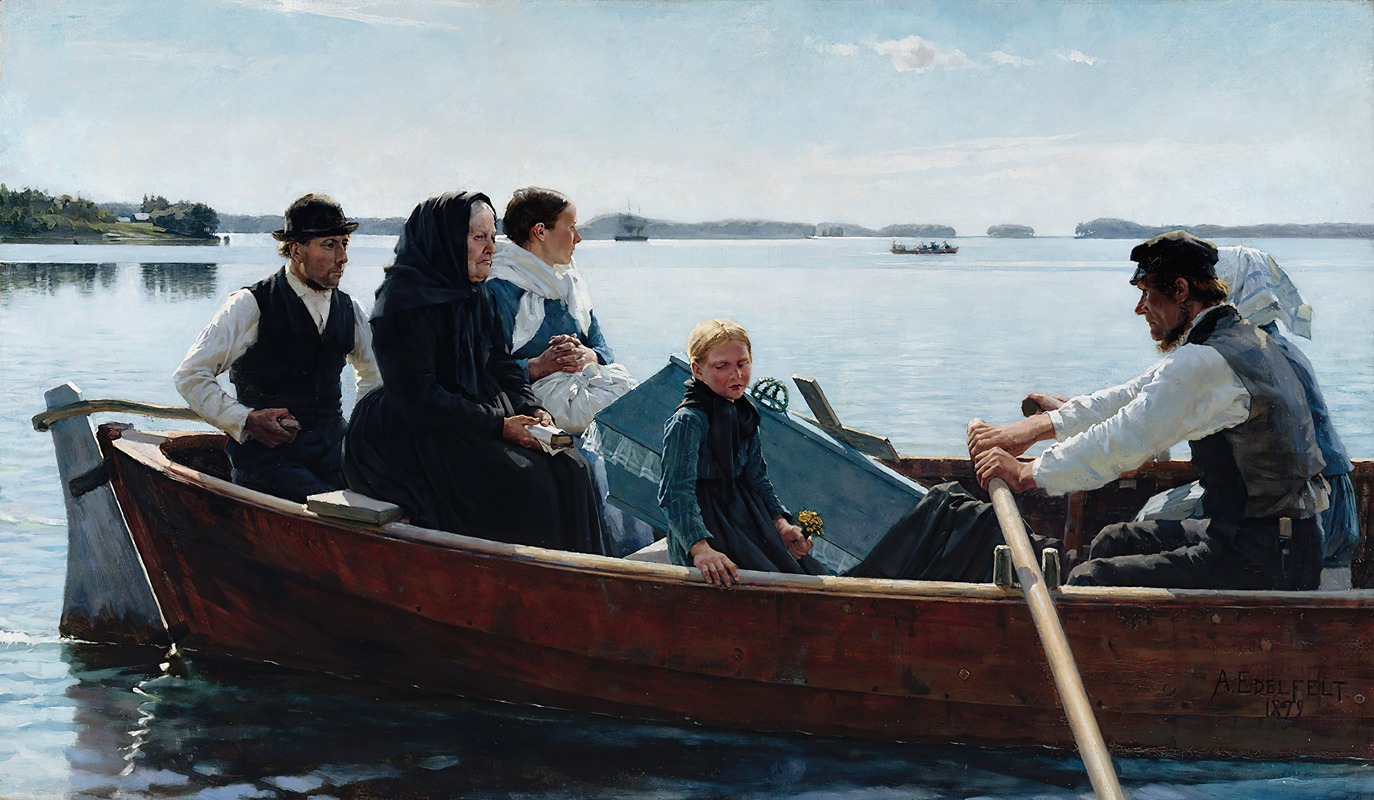
Conveying The Child’s Coffin
A hand-painted replica of Albert Edelfelt’s masterpiece Conveying The Child’s Coffin, meticulously crafted by professional artists to capture the true essence of the original. Each piece is created with museum-quality canvas and rare mineral pigments, carefully painted by experienced artists with delicate brushstrokes and rich, layered colors to perfectly recreate the texture of the original artwork. Unlike machine-printed reproductions, this hand-painted version brings the painting to life, infused with the artist’s emotions and skill in every stroke. Whether for personal collection or home decoration, it instantly elevates the artistic atmosphere of any space.
Albert Edelfelt was a prominent Finnish painter known for his realistic and evocative works. One of his notable paintings is "Conveying the Child’s Coffin" (original title in Finnish: "Lapsen ruumissaatto"), created in 1879. This painting is a poignant depiction of a rural Finnish funeral procession, capturing the somber mood and cultural practices of the time.
The painting illustrates a small group of people solemnly carrying a child's coffin through a snowy landscape. The scene is set in a rural Finnish village, reflecting the harsh yet beautiful Nordic environment. Edelfelt's use of light and shadow, along with his attention to detail, brings a sense of realism and emotional depth to the work. The snow-covered ground and the overcast sky contribute to the melancholic atmosphere, emphasizing the gravity of the moment.
Edelfelt was known for his ability to convey emotion and narrative through his art, and "Conveying the Child’s Coffin" is a prime example of this skill. The painting does not just depict a funeral; it tells a story of loss, community, and the cycle of life and death. The figures in the painting are dressed in traditional Finnish attire, and their expressions and body language convey a deep sense of mourning and solidarity. This reflects Edelfelt's interest in capturing the essence of Finnish culture and the human condition.
The painting is also significant in the context of Edelfelt's career. At the time of its creation, Edelfelt was gaining recognition as a leading artist in Finland and beyond. His works often explored themes of Finnish identity and rural life, and "Conveying the Child’s Coffin" is a testament to his commitment to these subjects. The painting was well-received and contributed to Edelfelt's reputation as a master of genre painting.
Edelfelt's technique in this painting is noteworthy. He was influenced by the naturalist movement, which emphasized realistic depictions of everyday life. His brushwork is meticulous, and he employs a muted color palette that enhances the somber mood of the scene. The composition is carefully balanced, with the procession forming a diagonal line that leads the viewer's eye through the painting, creating a sense of movement and continuity.
"Conveying the Child’s Coffin" is housed in the Ateneum Art Museum in Helsinki, Finland. It remains an important piece in the museum's collection, offering insight into 19th-century Finnish life and the universal themes of grief and community. The painting continues to be studied and appreciated for its artistic and cultural significance.
In summary, Albert Edelfelt's "Conveying the Child’s Coffin" is a masterful work that captures the essence of Finnish rural life and the emotional weight of a child's funeral. Through his realistic style and attention to cultural detail, Edelfelt creates a powerful narrative that resonates with viewers, making it a significant piece in the canon of Finnish art.







